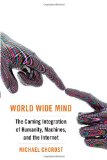
An efficient and user-friendly online shopping cart is an essential tool for any business or website owner involved in e-commerce product sales. But with so many online shopping carts available, it can be hard to decide which cart application will be up to the task at hand.
To begin with, there is the issue of selecting a free product or opting for one that has service charges. Naturally, everyone would choose the free option if they could, but there are occasions when free software may not possess the level of sophistication required. If this is the case, then purchasing a licensed product may be necessary, but then which one will be the right shopping cart for your transactional requirements?
Free Shopping Carts versus Paid E-Commerce Platforms
There are many well designed and functional free online shopping carts available. Most of these are open-source and operate under a GPL (General Public License). A lot of high-end shopping cart designers also produce free versions for smaller businesses or individual users.
Businesses or websites that have a larger product base or high sale yield may need to opt for a more substantial e-commerce platform. This will be a commercial licensed product that has advanced features and greater transactional control. Some of these platforms will charge a reoccurring monthly fee, while others may simply charge a one-off license payment.
The first decision should be whether the online business or product-based website can justify the price of a fully-fledged e-commerce platform, or will a good free GPL product suffice? This depends on stock levels, projected sales and expected consumer interaction. Once this decision has been made, it is then time to evaluate available products that meet the necessary criteria.
Online Shopping Carts: The Essential Features
In order to clarify things, it is probably best to initially outline a few necessary features that every online shopping cart and e-commerce platform should possess. This will help eliminate some feature-deficient products and help focus on only those products that meet, or surpass, the primary criteria.
- Catalogue Support – The ability to arrange products into accessible sections
- Customer Database – Keep track of customer information
- Order Management – Real-time status of current orders and refund organization
- Payment Processing – Wide range of commercially acceptable payment options
- Shipping & Handling – Email notification of orders and delivery fee calculation
- Statistical Analysis – Analyze orders, sales and conversion rates
- Multi-Lingual Capability – Translate into other languages
- Localization – Accept foreign currency and calculate taxes
- SEO Consideration – URL rewriting and provision for sitemap creation
- Security Measures – Secure logins. SSL compatible.
- Efficient Administration – User management and site maintenance
- Optional Customization – Advert insertion and featured product options
These features should come as standard, even in free versions. The more exceptional e-commerce platforms will come incorporated with more advanced features. Many of these full-feature platforms may charge for their product.
Advanced Features
- Additional Levels of Security – PC DSS (Payment Application Data Security Standard) compliant. This is a regulation enforced by the PCI SSC (Payment Card Industry Security Standards Council). You can find more information about these regulations and standards at the official PCI DSS website.
- Gift Card and Coupon Facility – Customers can purchase physical cards and use coupon codes
- Store Credit Available – Issue store credit for refunds etc.
- Rewards Systems – Ability to encourage return custom by awarding customers with redeemable loyalty points
- Customer Subscription – Allow customers to subscribe to newsletters, promotional emails etc.
- Advanced Analytics – Geo-location statistics, integration with Google Analytics.
- Social Media Compliant – Ready for integration with your favorite social media sites
- Advanced Customer Assistance – Breadcrumb trails and one-click bookmarking features
This is not an exhaustible list. Nor should a product be penalized if it happens to neglect one or two advance features, but then excels in most of the others. These are simply guidelines to help weed out the lower-quality shopping carts and e-commerce platforms.
Recommended Shopping Carts and E-Commerce Platforms
Now that the required and desired features have been highlighted, here are a few products that readily possess the above features and functions. (Note: Some of the free versions may not possess advanced features).
Shop Around to Find Your Ideal Cart
The selections above are an ideal place to start looking for an online shopping cart. But there are many alternative options. For anyone that has never used e-commerce software, it may be prudent to start with one of the free platforms and see what features and functions are preferred.
Every platform will have its own user interface and different modules and sometimes finding the best online shopping cart is a matter of locating a respectable product that you feel comfortable with. It is true that some versions will require more interaction and individual development while others will be more novice-friendly and possess almost one-click functionality. Finding a platform that you can use with ease is a large part of the selection process.
Don’t be afraid to try before you buy. Many paid versions will offer limited-time trials and even if that option does not appear available, in many cases the designers will gladly allow you a free test if you contact them directly.
Finding the right e-commerce platform will optimize you online business, help you to organize your storefronts, generate return business, and efficiently process and manage sales and transactions.
About the Author: This guest post is contributed by Roko Nastic of WebmasterFormat.com, a website focused on delivering advice and actionable tips on writing, website promotion techniques, best web hosts and the latest trends in web development technologies.
by Eric A. Meyer is from Sitepoint, 2011. This is a very different sort of book by Eric Meyer. Not in subject matter, of course, but in tone and purpose. Instead of his previous rather pedantic and encyclopedic listing of every thing you might ever want to know about CSS, this book is light, humorous, and organized to be read from front to back.






